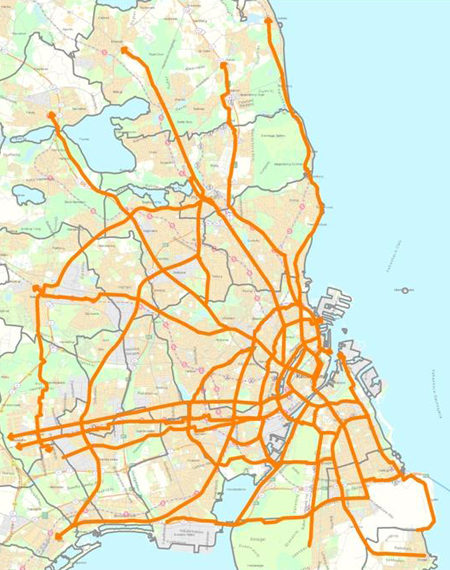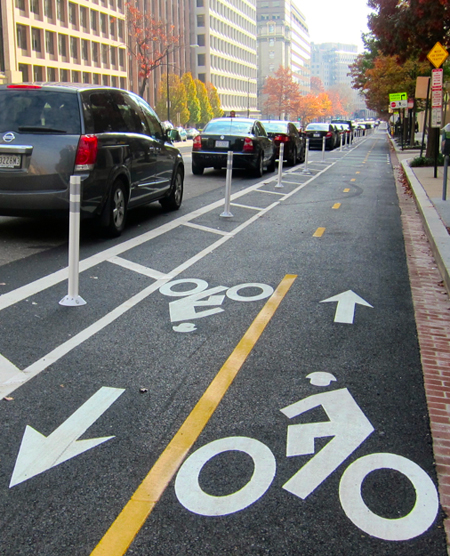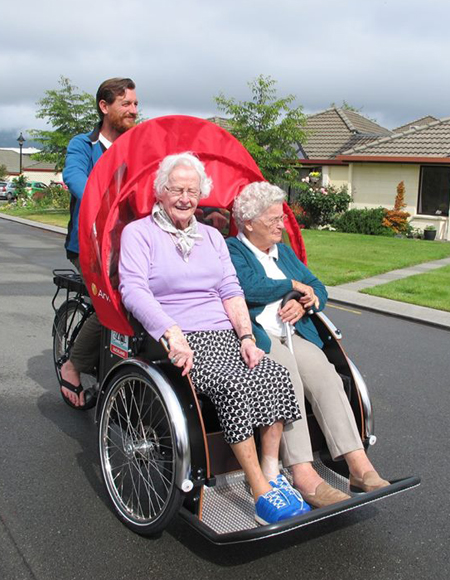WHAT WE CAN LEARN FROM COPENHAGEN?

In Copenhagen, Denmark, nearly 50 percent of people commute by bicycle. No matter if it’s blustery winter day or beautiful summer one, Danes use their beloved bicycle network, because it’s the fastest, most convenient, healthiest, and cheapest way to get from point A to B. In a discussion organized by the World Resources Institute (WRI) and the Embassy of Denmark at the National Press Club in Washington, D.C., we learned how Denmark made bicycling the most popular form of transportation, and how other cities can create a culture of bicycling.
Klaus Bondam, a jolly artist and former politician, now runs the Danish Cyclists’ Federation. He explained that in Copenhagen 17 percent of all trips are made by bicycle and some 50 percent of destinations can be reached by bike.
Danes learn to love biking early on. Parents bring their kids out into traffic in bike carts when they are toddlers, and their kids begin navigating traffic on their own bikes starting around age 5 or 6. This is all possible because of the investments the Danes have made to make their bike infrastructure safe for everyone.

Their infrastructure is mostly comprised of protected, segregated bike lanes. “Building proper, curbed lanes” is crucial, according to Bondam, as that enables women and kids — the next generation — to safely bike.

The Danes built their lanes as part of a comprehensive network, which “connects the suburbs to the inner city, radiating out 25 kilometers.”

Within this network, there are “bicycle super highways” that include the fantastic bicycle bridge that take riders through the urban core.

To accomplish all of this, the Danish government created a national bicycle strategy and a national bicycle fund. As Bondam noted, if you spend the money and build it they will come. “There are 24 percent more cyclists where there is new infrastructure.”
Copenhagen took several generations to get to where it is now. Investments in the bicycle network started around the turn of the 20th century. It took more than 75 years for Copenhagen to get to 50 percent.
A panel discussed how American cities can learn from Denmark’s example. Washington, D.C. has gone from 1 percent of people commuting by bicycle to 4 percent in just a few years. Leif Dormsjo, the head of D.C.’s department of transportation, said the city has made major investments in bike lanes and connective trails, and sees building complete streets — which work equally as well for pedestrians, bicyclists, and cars — as a primary strategy moving forward. Also, the D.C. government is investing in educating riders early on. A new program teaches every second grader in the city how to ride a bike.
While Bondam and Dormsjo noted the great progress in D.C. since he was last year in 2002, Greg Billing, executive director of the Washington Area Bicycle Association (WABA), wants to see more bike lanes transformed into protected, segregated cycle tracks. “On a sunny day, the 15th street cycle track gets 3,000 riders, which is about 30 percent of the total traffic.” With more separate lanes, bike number could go up throughout the city.

Sam Adams, former Mayor of Portland, Oregon, and now US director at WRI, said Portland was long stuck at a plateau of around 4 percent commuting by bike. Getting to 8 percent, where they are now, took hard work. The city had to convince women, aged 18-40, to believe biking is safe. They targeted the top 25 most dangerous intersections. Adams found these intersections were almost always dangerous for more than one mode of transit. “Redesigning these intersections created multiple benefits.” Another key element was boosting the budget for bicycle infrastructure from $1 million to $17 million.

But everyone on the panel admitted that in an era of very tight budgets, increasing investments in bicycle infrastructure isn’t easy. As lanes for cars shrink and parking is removed, “some car advocates will argue their freedom is being taken away,” said Bondam. “But I feel my freedom, as a bicyclist, is taken away if I’m stuck in a car.” Adams said Portland’s increased spending on bicycle lanes, especially on the basic safety of lanes in communities further out from the inner-core, was “highly controversial.”
Moving bicycle infrastructure forward takes real leadership. Dormsjo said it was important U.S. department of transportation secretary Anthony Foxx sees bike lanes as a priority in terms of federal investment. In D.C., the “sophisticated” city council has many bike riders, and Mayor Muriel Bower understands the issues, so there has been headway.
For Billing, the next step is to implement Vision Zero, which calls for zero traffic fatalities in the district. “We need to change the transportation system to prevent fatalities. Nobody should die trying to go somewhere.” Regionally, D.C. has had 450 deaths by cars in the past year, with pedestrian and bicyclist deaths at higher proportions than their share of street use. A new report from Smart Growth America — Dangerous by Design — outlines the latest data and steps that can be taken.
And more need to benefit from bicycling. Hon. Craig Iscoe, with Cycling without Aging, promoted the use of bicycle rickshaws to take seniors stuck at home, or, worse, old-age homes out for a ride.

And Billing argued bike lanes need to be better spread throughout poorer parts of the city. As part of this, an education campaign is needed to change the perception of bike lanes and bike share as an “agent of gentrification,” said Tommy Wells, director of D.C. department of energy and environment.
Bondam quoted President John F. Kennedy, who said “nothing compares to the simple pleasure of a bike ride.” We can focus on safety and use a mix of investment and education to spread that joy to everyone.







Imagine the greater metro areas in New Mexico.